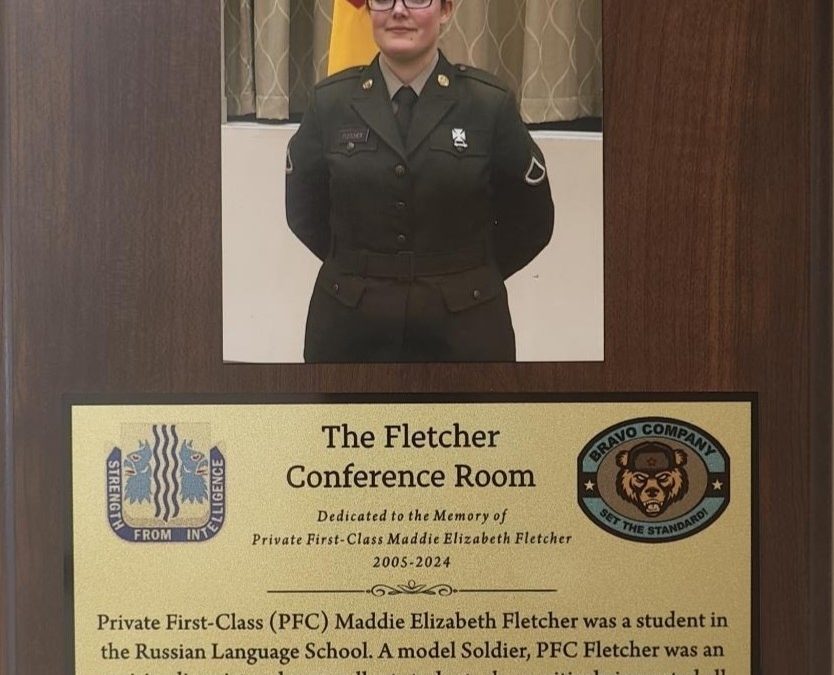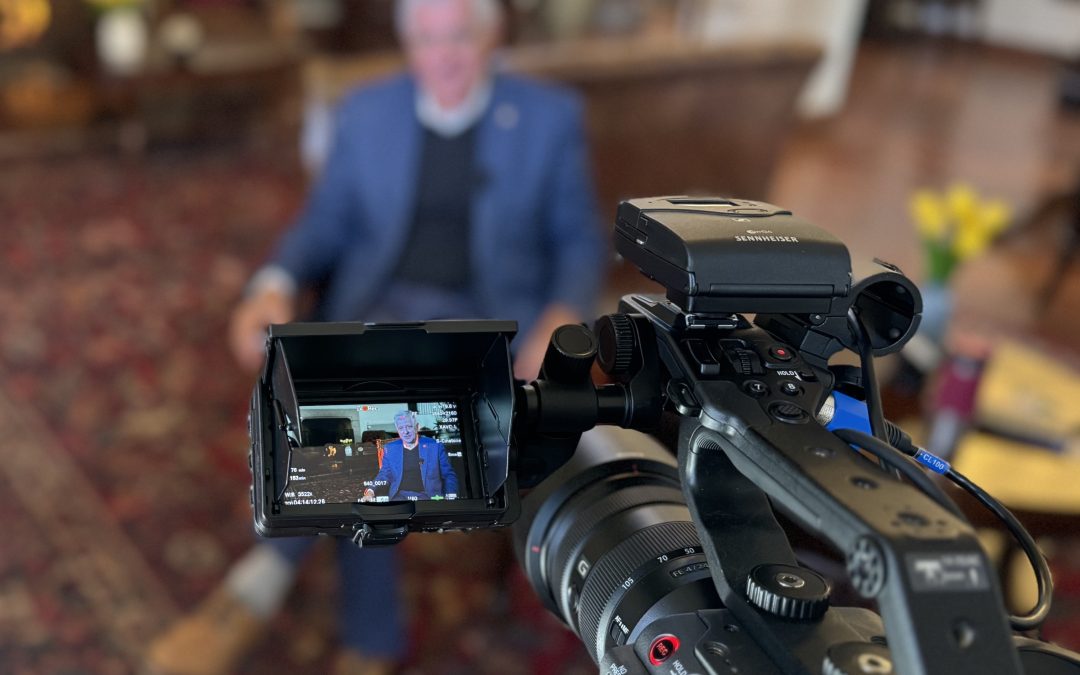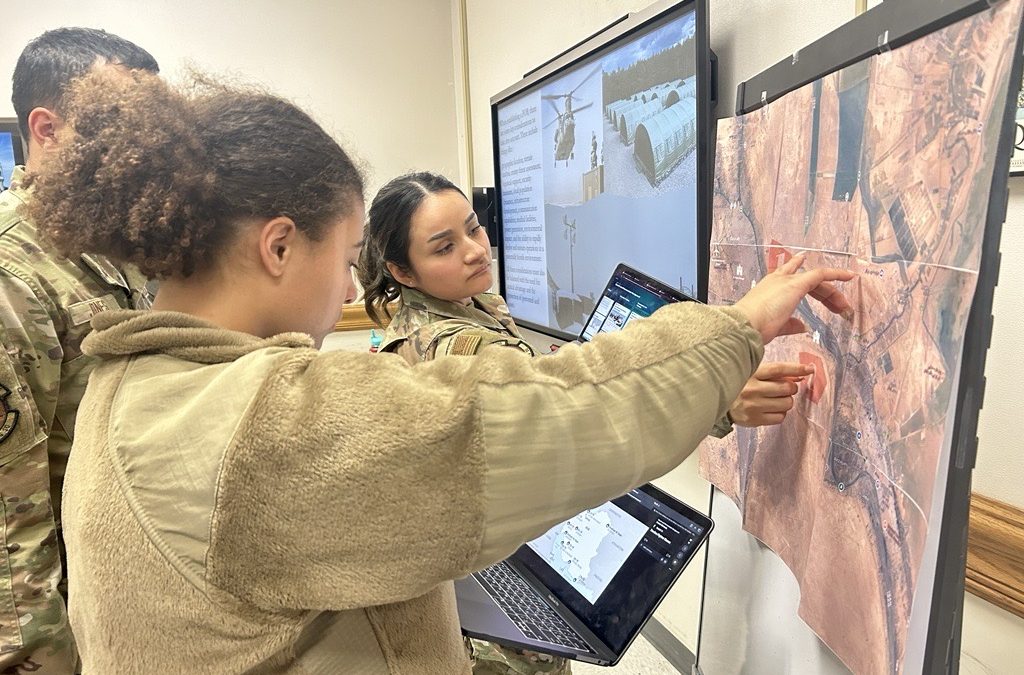By Patrick Bray
DLIFLC Public Affairs

Students at the Defense Language Institute Foreign Language Center enjoy practicing Chinese calligraphy taught by Dr. Li-Yuan “Joan” Liao. As one of the oldest written scripts in the world, Chinese characters remain in use today and calligraphy, which is thousands of years old, is still widely taught and practiced. The mission of DLIFLC is to provide the highest quality culturally-based foreign language education and training. Calligraphy opens a window for students to be more exposed to Chinese culture. (U.S. Army photo by Patrick Bray/Released)
MONTEREY, Calif. – Students at the Defense Language Institute Foreign Language Center who are studying Chinese can also practice calligraphy taught by Dr. Li-Yuan “Joan” Liao, an instructor at the Institute with a strong background in the art.
“The regular students who come to my class every Thursday are eager to write with the brush and ink and they feel like the 45-minute class flies by too fast,” said Liao. “I really appreciate our schoolhouse in providing this opportunity for our students to explore the core of Chinese culture.”
Part of the mission of DLIFLC is to provide the highest quality culturally based foreign language training with the teaching of culture as an integral part of foreign language instruction. So, in January 2018, Liao received support from Chao Xie, chairperson of Chinese Department B, to lead and teach Chinese calligraphy as an extracurricular activity.
“Based on my observation and the feedback I collected from both learners and their instructors, all the students from Dr. Liao’s Chinese calligraphy club have better academic performance in their own class,” said Xie. “They are getting more motivated to learn Chinese language and they have a deeper understanding of Chinese culture as well.”
As one of the oldest written scripts in the world, Chinese characters remain in use today with calligraphy still being widely taught and practiced. Chinese characters are taken from nature, with the character of the sun being a picture of the sun and the moon a picture of the moon, for example. The emphasis is on fitting in with nature. Liao started the class with drawing the ancient Chinese oracle scripts to let her students become familiar with the evolution of Chinese characters.

The “four treasures of the study” of Chinese calligraphy are the writing brush, ink stick, paper and the ink stone. Students at the Defense Language Institute Foreign Language Center who are studying Chinese can also practice calligraphy as an extracurricular activity. “Students not only have fun from learning calligraphy, but it also opens a window for themselves to be exposed to Chinese culture and arts,” said Chao Xie, chairperson of Chinese Department B. (U.S. Army photo by Patrick Bray/Released)
“I was very impressed by how well our students mastered the Chinese brushes with ink in the first class. I love the Zen atmosphere they create while rubbing-down ink and writing with ink and brushes as well,” said Liao.
Both Liao and Xie agree that language and culture cannot be separated.
“Students not only have fun from learning calligraphy, but it also opens a window for themselves to be exposed to Chinese culture and arts,” said Xie. “From this perspective, learning the culture will benefit language learners a lot.”
For Liao, who pursued her higher education in the U.S. and taught calligraphy and painting to children in Oklahoma and Texas, never foresaw herself teaching Chinese calligraphy so successfully when she was at home in Taiwan.
Liao came from a family of teachers. Her grandfather was a professor in Chinese literature and history and her mother was an art teacher specialized in Chinese painting.
Influenced by an ancient Confucian trend where almost all scholars were capable of four traditional arts – lute-playing, chess, calligraphy and painting – Liao’s mother sent her to learn piano, percussion, ballet, and pottery from the age of six.
“None of these I was interested and really had fun with until I asked my mom to let me learn Chinese calligraphy when I was 10,” said Liao.
Liao fell in love with learning the clerical script style, which was also known as the official script during the Han Dynasty about 2000 years ago. Most people who learn Chinese calligraphy will begin with the regular script.

Students at the Defense Language Institute Foreign Language Center who are studying Chinese can also practice calligraphy as an extracurricular activity. As one of the oldest written scripts in the world, Chinese characters remain in use today. Calligraphy, which is thousands of years old, is still widely taught and practiced, opening a window for students to be more exposed to Chinese culture. (U.S. Army photo by Patrick Bray/Released)
“Since then, my calligraphy teacher submitted much of my work to calligraphy competitions and I attended various competitions until the end of my college years. I won schoolwide, regional and national awards at the time,” said Liao.
But it wasn’t winning competitions that drove her calligraphy. “In retrospect, once I held a brush, I felt that I was accepted into a peaceful world, a pure land you can say,” Liao added.
DLIFLC provides resident instruction in 17 languages at the Presidio of Monterey, California, with the capacity to instruct another 65 languages in Washington, D.C. The Institute has graduated more than 220,000 linguists since 1941.
In addition, multiple language training detachments exists at sites in the U.S., Europe, Hawaii and Korea, spanning all the U.S. geographic combatant commands in support of the total force.




